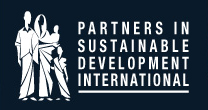Why does it rain so much in Bangladesh?
“Millions in Bangladesh impacted by one of the worst floods ever seen.”1
“Bangladesh floods: Experts say climate crisis worsening situation”2
“‘I’ve Never Seen a Flood Like This’: Bangladesh Reels From Heavy Rains”3
Above are titles of three recent articles from newspapers around the world - all reporting on the same topic: the current unprecedented flooding in Bangladesh.
Heavy rainfall and flooding are not novel experiences for the South-Asian country. In fact, the country has faced many intense flooding incidents, notably in 1998, 2004, and 2012. The rhythms of local life have adapted over centuries to the annual monsoon that typically runs from June to September”, prompting many Bangladeshi to align agricultural opportunities (such as cultivating rice) in accordance with the heavy rainfall.4 However, since May, Bangladesh has been facing the worst flooding that it’s experienced in decades.3
Nine northeastern districts have been severely impacted, including, Sylhet, Sunamganj, Moulvibazar, Habiganj, Kishoreganj, Netrakona, Brahmanbaria, Mymensingh and Sherpur, with Sylhet being hit the hardest. Thousands of homes, schools, businesses, roads, and other infrastructures have been utterly destroyed. In addition, water borne-diseases have become rampant, with a large increase in severe diarrheal cases.5
The World Health Organization estimates that more than 9 million Bangladeshi have become homeless as a result of the recent flooding.5 Many of those displaced by the flooding have had to seek shelter elsewhere, typically finding refuge in Dhaka urban slums. However, the conditions in Dhaka can prove to be just as challenging, where housing and space is limited, as well as economic opportunities.1
This state of emergency is alarming. This unprecedented amount of flooding as well as Bangladesh’s long history of massive floods begs the question: Why is Bangladesh prone to facing these types of floods?
A large part of this answer lies in the country’s geography. The majority of the country’s terrain is low and flat, with two-thirds of the country only 15 feet above sea level. This makes the land extremely vulnerable to even the smallest amount of sea-level rise, cyclones, floods, and other natural disasters. In addition, Bangladesh is home to many powerful rivers.4
Another reason is human activity. Bangladesh is a densely populated country; currently, the country is home to 170 million inhabitants (which is roughly half of the United States population) but geographically, is only the size of the state of Illinois. With a growing population that is migrating to cities, the country is experiencing rapid urbanization. Consequently, as more people move into cities, agricultural lands that once proved useful at maintaining flooding, are now dominated by industrial buildings and other constructions. Additionally, deforestation has caused landslides and soil erosion to occur during the monsoon season, especially in uphill areas.4
A third reason is climate change. Sea levels are rising globally as well as greenhouse gas emissions. These emissions create warmer temperatures, which results in glacier liquifying.2 The huge quantities of melted water from the Himalayas are speeding up through the Ganges and Brahmaputra (two large Bangladeshi rivers) and crashing to the coastal estuaries of Bangladesh.4 The 1998, 2004, and 2012 flooding incidents were all tied to the ice caps melting in the Himalayan Mountains, and all occurred during Bangladesh’s monsoon season (July to mid-August), causing further damage.4
Lastly, it is difficult for the country to “bounce-back” after each flooding incident. Bangladesh has no time to prepare or fully recover from the floods and this hurts the country’s economy, constantly having to repair or improve flood defenses that are then easily destroyed during the next flooding occurrence.3
Current efforts to help those displaced by the flooding are underway, with the UN and differing NGO partners delivering food assistance, drinking water, water purification tablets, hygiene kits, and other necessary items to affected families.1
PSDI is one of those partners – thanks to our donors, increasing efforts to provide assistance to those affected in the two districts of Netrakona and Kishoreganj where we serve. Our team in Bangladesh has partnered with local organizations to provide meals to 700 families and our donors in the U.S. have given more than $7,000 to this cause this year. And more help is needed. Give today at https://2022flood.gvtls.com. Thank you.
References
Hasnat, S., & Ives, M. (2022, June 24). 'I've never seen a flood like this': Bangladesh reels from heavy rains. The New York Times. Retrieved August 11, 2022, from https://www.nytimes.com/2022/06/24/world/asia/sylhet-bangladesh-floods.html
Mahmud, F. (2022, June 22). Bangladesh floods: Experts say climate crisis worsening situation. Floods News | Al Jazeera. Retrieved August 12, 2022, from https://www.aljazeera.com/news/2022/6/22/bangladesh-floods-experts-say-climate-crisis-worsening-situation
Hasnat, S., & Ives, M. (2022, June 24). 'I've never seen a flood like this': Bangladesh reels from heavy rains. The New York Times. Retrieved August 12, 2022, from https://www.nytimes.com/2022/06/24/world/asia/sylhet-bangladesh-floods.html
Bangladesh: Flooding and impacts. FloodWorld. (n.d.). Retrieved August 12, 2022, from https://water104website.weebly.com/bangladesh-flooding-and-impacts.html
Sylhet flash floods: Situation & support - bangladesh. ReliefWeb. (2022, July 1). Retrieved August 12, 2022, from https://reliefweb.int/report/bangladesh/sylhet-flash-floods-situation-support
